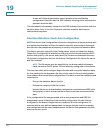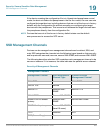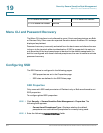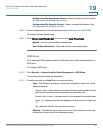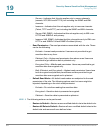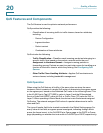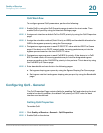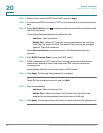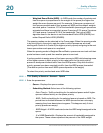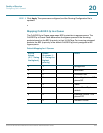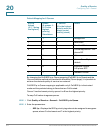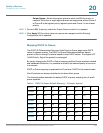
Quality of Service
Configuring QoS - General
307 Cisco Small Business 200 Series Smart Switch Administration Guide
20
STEP 3 Select a trust mode (CoS/802.1p or DSCP) and click Apply.
STEP 4 If you selected DSCP, proceed to STEP 6; if you selected CoS, proceed to the next
step.
STEP 5 Select Port/LAG and click GO to display/modify all ports/LAGs on the device and
their CoS information.
The following fields are displayed for all ports/LAGs:
• Interface—Type of interface.
• Default CoS—Default VPT value for incoming packets that do not have a
VLAN Tag. The default CoS is 0. The default is only relevant for untagged
frames if Trust CoS is selected.
Select Restore Defaults to restore the factory CoS default setting for this
interface.
STEP 6 Click DSCP Override Table to enter the DSCP values.
STEP 7 DSCP In displays the DSCP value of the incoming packet that needs to be re-
marked to an alternative value. Select the new DSCP value to override the
incoming value.
Select Restore Defaults to restore the factory DSCP values.
STEP 8 Click Apply. The Running Configuration file is updated.
To set QoS on an interface, select it, and click Edit.
STEP 1 Enter the parameters.
• Interface—Select the port or LAG.
• Default CoS—Select the default CoS (Class-of-Service) value to be
assigned for incoming packets (that do not have a VLAN tag).
STEP 2 Click Apply. The interface default CoS value is saved to Running Configuration file.



